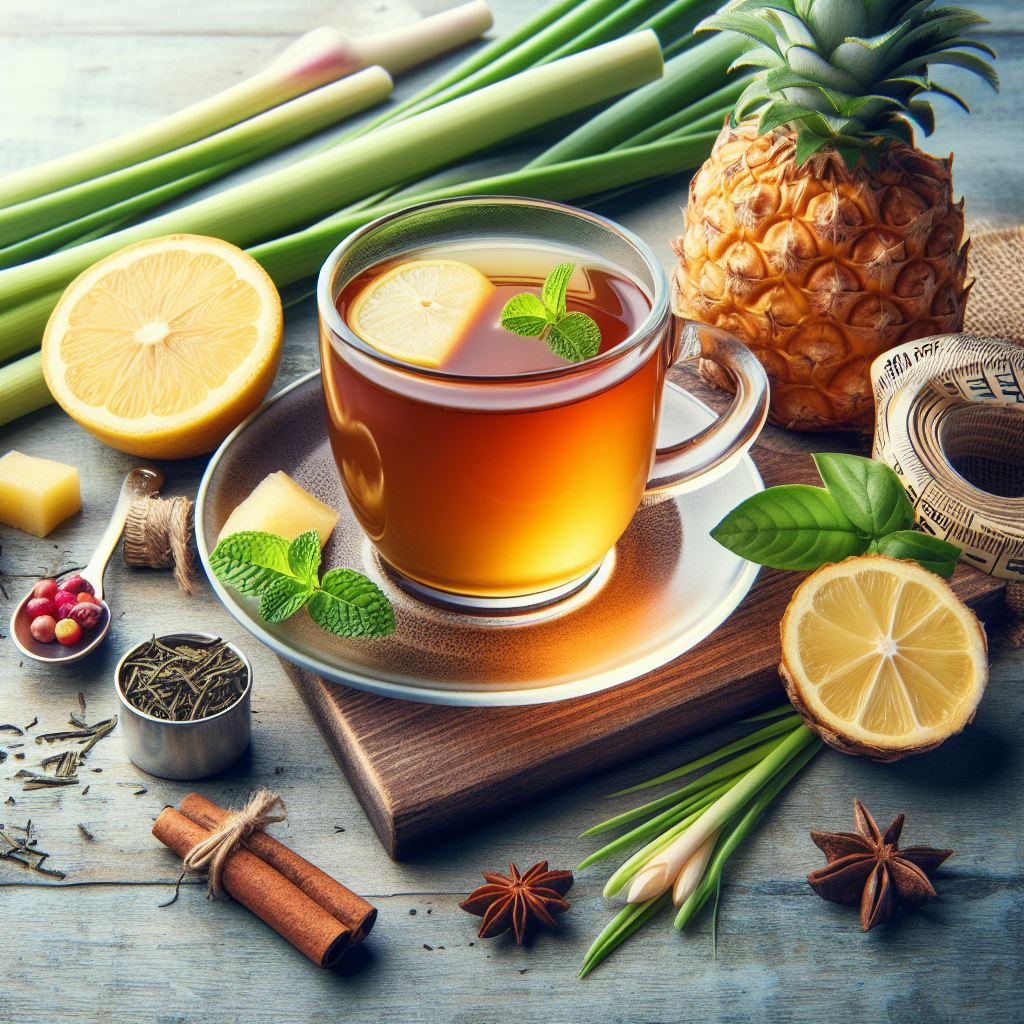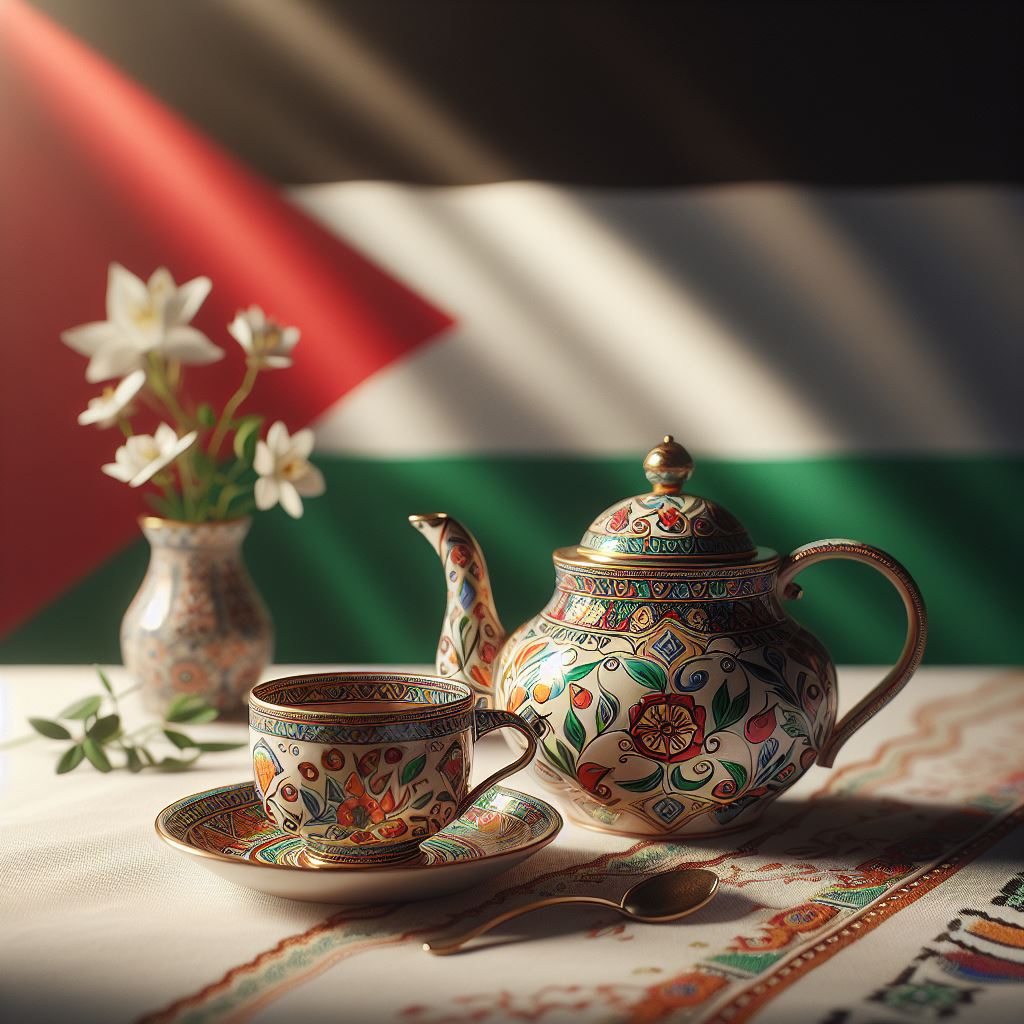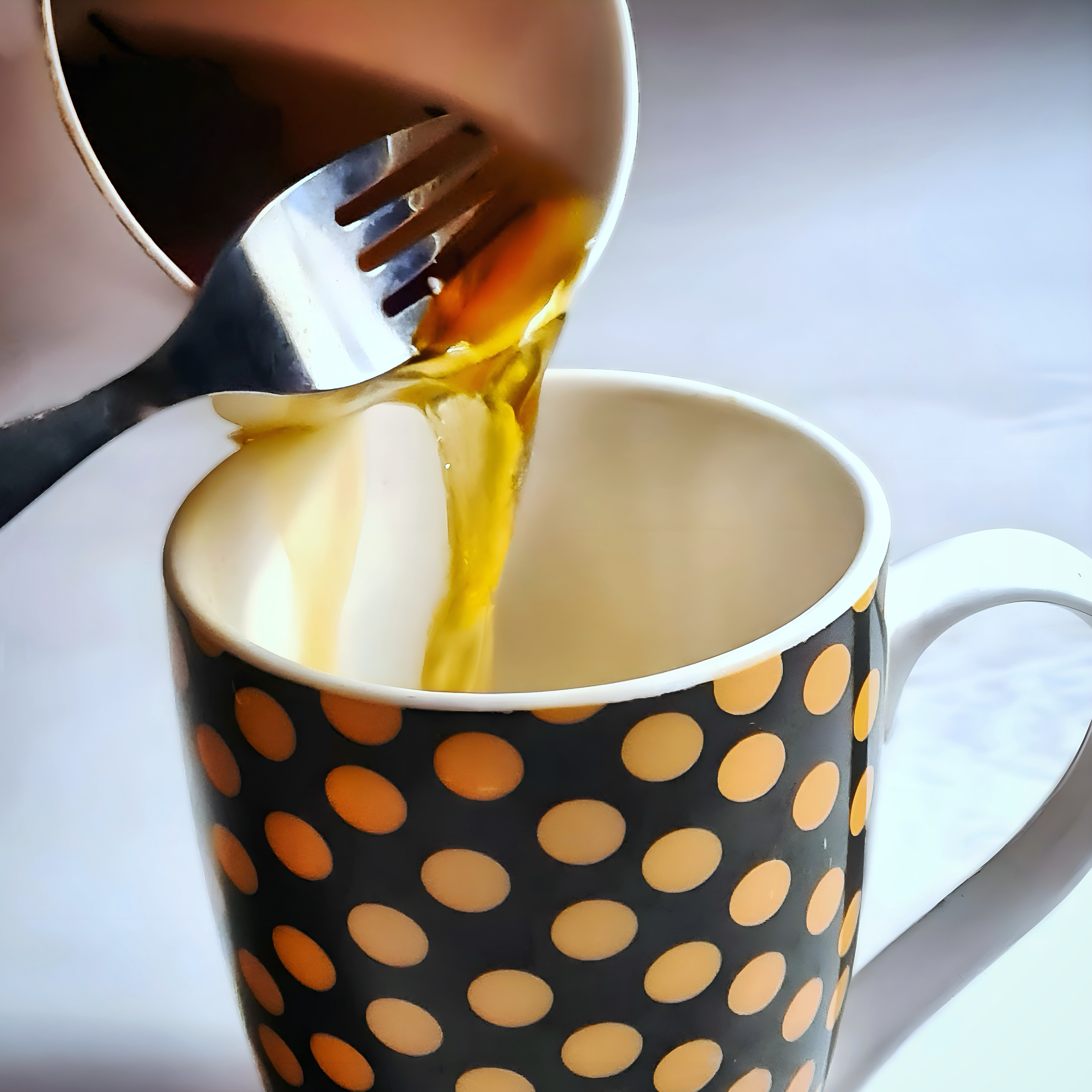Are you ready to elevate your tea-drinking experience to a whole new level? Join us on a delightful journey as we discover the best non-dairy milk options that will perfectly complement your favorite tea. Get ready to add a dash of creativity and a splash of flavor to your tea rituals!

What is Non-Dairy Milk and Why is it Popular?
Non-dairy milk is any plant-based beverage that mimics the properties of dairy milk, such as color, texture, and taste. Non-dairy milk is made from various sources, such as nuts, seeds, grains, or legumes. Some of the most common types of non-dairy milk are almond milk, coconut milk, oat milk, soy milk, and rice milk.
This dairy-free milk has been gaining popularity in recent years for several reasons:
- First, non-dairy milk is a great alternative for people who are lactose intolerant, vegan, or allergic to dairy products. It can also provide similar nutritional benefits as dairy milk, such as calcium, protein, and vitamin D, without causing any digestive discomfort or ethical concerns.
- Second, non-dairy milk is more environmentally friendly than dairy milk, as it requires less water, land, and greenhouse gas emissions to produce. Non-dairy milk can also help reduce animal suffering and promote biodiversity.
- Third, non-dairy milk offers a variety of flavors and textures that can suit different preferences and occasions. Non-dairy milk can enhance the taste and appearance of your tea, as well as add some extra health benefits. Whether you like your tea sweet, creamy, nutty, or fruity, there is a non-dairy milk option for you!
How to Choose the Best Non-Dairy Milk for Tea
When it comes to choosing the best non-dairy milk for tea, there are three main factors to consider: flavor profiles, texture and mouthfeel, and compatibility with tea types.

1. Flavor Profiles
The flavor profile of non-dairy milk refers to how it affects the taste of your tea. Different non-dairy milks have different natural flavors that can either complement or contrast with the flavor of your tea. For example, almond milk has a mild and nutty flavor that can enhance the richness of black tea, while coconut milk has a sweet and tropical flavor that can balance the bitterness of green tea.
The flavor profile of non-dairy milk can also be influenced by other ingredients, such as sugar, salt, or additives. Some non-dairy milks are sweetened or flavored with vanilla, chocolate, or caramel, which can add some extra sweetness and complexity to your tea. However, some people may prefer unsweetened or plain non-dairy milks to avoid adding extra calories or masking the natural flavor of their tea.
2. Texture and Mouthfeel
The texture and mouthfeel of non-dairy milk refer to how it feels in your mouth and how it blends with your tea. Different non-dairy milks have different levels of thickness and creaminess that can affect the overall tea-drinking experience. For example, oat milk has a smooth and creamy texture that can create a frothy and velvety tea, while rice milk has a thin and watery texture that can make a light and refreshing tea.
The texture and mouthfeel of non-dairy milk can also depend on how you heat and mix it with your tea. Some non-dairy milks are more stable and resistant to curdling than others, which means they can withstand high temperatures and acidic teas without separating or forming clumps. Some non-dairy milks are also easier to froth and foam than others, which means they can create a smooth and airy tea.
3. Compatibility with Tea Types
The compatibility of non-dairy milk with tea types refers to how well it matches the characteristics and qualities of your tea. Different tea types have different flavors, aromas, colors, and benefits that can be enhanced or diminished by the choice of non-dairy milk. For example, black tea has a strong and bold flavor that can pair well with rich and creamy non-dairy milks, while herbal tea has a delicate and floral flavor that can pair well with light and fruity non-dairy milks.
The compatibility of non-dairy milk with tea types can also vary depending on your personal preference and mood. Some people may enjoy experimenting with different combinations and discovering new flavors, while others may stick to their tried and true favorites and enjoy the familiarity and comfort. There is no right or wrong way to enjoy your tea and non-dairy milk, as long as you have fun and savor the moment!
The Best Non-Dairy Milk for Different Tea Types
Now that you know the factors to consider when choosing the best non-dairy milk for tea, let’s take a look at some of the best options for different tea types. Of course, these are not the only options available, and you are free to explore and find your own favorites. But if you need some inspiration, here are some suggestions to get you started:
Black Tea
Black tea is one of the most popular and widely consumed tea types in the world. It is made from the leaves of the Camellia sinensis plant, which are fully oxidized and fermented, giving it a dark color and a robust flavor. Black tea can have various notes of malt, smoke, spice, or fruit, depending on the origin and processing method.
Some of the best non-dairy milk options for black tea are:
Soy Milk
Soy milk is one of the most common and versatile non-dairy milks. It is made from soybeans that are soaked, ground, and boiled with water, resulting in a creamy and nutty beverage. Soy milk has a high protein content and a neutral flavor that can blend well with black tea, enhancing its richness and body. Not only that, it is also stable and resistant to curdling, making it ideal for hot and acidic teas. Try soy milk with English breakfast, Earl Grey, or Assam tea for a classic and satisfying combination.

Oat Milk
Oat milk is one of the newest and trendiest non-dairy milks. It is made from oats that are soaked, blended, and strained with water, resulting in a smooth and creamy beverage. Oat milk has a high fiber content and a sweet and oatmeal-like flavor that can complement the malty and biscuity notes of black tea. This type of milk is also easy to froth and foam, making it perfect for creating tea lattes. Try oat milk with Irish breakfast, Darjeeling, or Ceylon tea for a cozy and comforting combination.

Almond Milk
Almond milk is one of the most popular and widely available non-dairy milks. It is made from almonds that are soaked, blended, and strained with water, resulting in a thin and nutty beverage. Almond milk has a low calorie content and a mild and almond-like flavor that can add some nuttiness and sweetness to black tea. It is also suitable for cold and iced teas, as it does not curdle easily. Try almond milk with Chai, Masala, or Turkish tea for a spicy and exotic combination.

Green Tea
Green tea is another popular and widely consumed tea type in the world. It is also made from the leaves of the Camellia sinensis plant, but they are minimally oxidized and unfermented, giving it a light color and a delicate flavor. Green tea can have various notes of grass, seaweed, vegetal, or floral, depending on the origin and processing method.
Some of the best non-dairy milk options for green tea are:
Coconut Milk
Coconut milk is one of the most flavorful and exotic non-dairy milks. It is made from the flesh of coconuts that are grated, soaked, and squeezed with water, resulting in a thick and creamy beverage. Coconut milk has a high fat content and a sweet and tropical flavor that can balance the bitterness and astringency of green tea. This milk is also suitable for hot and cold teas, as it does not curdle easily. Try coconut milk with Jasmine, Sencha, or Matcha tea for a refreshing and fragrant combination.

Rice Milk
Rice milk is one of the most simple and natural non-dairy milks. It is made from rice that is cooked, blended, and strained with water, resulting in a thin and watery beverage. Rice milk has a low allergen content and a neutral and slightly sweet flavor that can enhance the subtle and grassy notes of green tea. This milk is also suitable for hot and cold teas, as it does not curdle easily. Try rice milk with Genmaicha, Hojicha, or Gunpowder tea for a toasty and nutty combination.

Cashew Milk
Cashew milk is one of the most creamy and decadent non-dairy milks. It is made from cashews that are soaked, blended, and strained with water, resulting in a smooth and velvety beverage. Cashew milk has a high fat content and a rich and buttery flavor that can add some creaminess and smoothness to green tea. Not just that, is also suitable for hot and cold teas, as it does not curdle easily. Try cashew milk with Moroccan mint, Dragon well, or Gyokuro tea for a smooth and soothing combination.

Herbal Tea
Herbal tea is a broad category of tea that includes any infusion of herbs, spices, flowers, fruits, or other plant materials that are not derived from the Camellia sinensis plant. It can have a wide range of flavors, aromas, colors, and benefits, depending on the ingredients and combinations used. Herbal tea can also be caffeine-free, making it a great choice for any time of the day.
Some of the best non-dairy milk options for herbal tea are:
Oat Milk
Oat milk is one of the most smooth and creamy non-dairy milks. It has a high fiber content and a sweet and oatmeal-like flavor that can complement the warm and cozy notes of herbal tea. Oat milk is also easy to froth and foam, making it perfect for creating lattes and cappuccinos. Try oat milk with chamomile, lavender, or rooibos tea for a relaxing and soothing combination.
Coconut Milk
Coconut milk is one of the most flavorful and exotic non-dairy milks. It has a high fat content and a sweet and tropical flavor that can balance the tart and tangy notes of herbal tea. Coconut milk is also suitable for hot and cold teas, as it does not curdle easily. Try coconut milk with hibiscus, lemon, or ginger tea for a refreshing and invigorating combination.
Almond Milk
Almond milk is one of the most popular and widely available non-dairy milks. It has a low calorie content and a mild and almond-like flavor that can add some nuttiness and sweetness to herbal tea. Almond milk is also suitable for cold and iced teas, as it does not curdle easily. Try almond milk with peppermint, cinnamon, or apple tea for a festive and flavorful combination.
Bonus Non-Dairy Milk Options:
There are also many other options to try and experiment with. Here are some more unique types of non-dairy milks that you can use for tea:
Hemp Milk
Hemp milk is one of the most nutritious and versatile non-dairy milks. It is made from hemp seeds that are soaked, blended, and strained with water, resulting in a smooth and creamy beverage. Hemp milk has a high protein content and a mild and earthy flavor that can complement the rich and nutty notes of black tea. This milk is also easy to froth and foam, making it perfect for creating lattes and cappuccinos. Try hemp milk with Earl Grey, Assam, or Darjeeling tea for a classic and satisfying combination.
Banana Milk
Banana milk is one of the most delicious and decadent non-dairy milks. It is made from bananas that are peeled, blended with water or plant-based yogurt (such as coconut or oat), resulting in a thick and creamy beverage. Banana milk has a high fiber content and a sweet and fruity flavor that can add some creaminess and smoothness to black tea. This milk is also suitable for hot and cold teas, as it does not curdle easily. Try banana milk with Chai, Masala, or Turkish tea for a spicy and exotic combination.
Pea Milk
Pea milk is one of the most protein-rich and environmentally friendly non-dairy milks. It is made from yellow peas that are processed and purified with water, resulting in a creamy and smooth beverage. Pea milk has a high protein content and a neutral and slightly sweet flavor that can work well with any tea type. This milk is also stable and resistant to curdling, making it ideal for hot and acidic teas. Try pea milk with Earl Grey, Jasmine, or Chamomile tea for a simple and satisfying combination.
Hazelnut Milk
Hazelnut milk is one of the most nutty and flavorful non-dairy milks. It is made from hazelnuts that are soaked, blended, and strained with water, resulting in a thin and nutty beverage. Hazelnut milk has a low calorie content and a rich and hazelnut-like flavor that can add some depth and complexity to black tea. This milk is also suitable for cold and iced teas, as it does not curdle easily. Try hazelnut milk with Chai, Masala, or Turkish tea for a nutty and spicy combination.
Macadamia Milk
Macadamia milk is one of the most creamy and decadent non-dairy milks. It is made from macadamia nuts that are soaked, blended, and strained with water, resulting in a smooth and velvety beverage. Macadamia milk has a high fat content and a buttery and macadamia-like flavor that can add some creaminess and smoothness to green tea. This milk is also suitable for hot and cold teas, as it does not curdle easily. Try macadamia milk with Sencha, Matcha, or Gyokuro tea for a smooth and soothing combination.
Creative Ways to Use Non-Dairy Milk in Tea
Now that you know the best non-dairy milk options for different tea types, let’s explore some creative ways to use them in your tea. Non-dairy milk can add some fun and variety to your tea-drinking experience, as well as impress your friends and family with your tea skills. Here are some ideas to try:

Frothing and Latte Art
One of the most popular and enjoyable ways to use non-dairy milk in tea is to froth and foam it and create beautiful latte art designs. Latte art is the art of pouring steamed milk into a cup of tea in a way that forms patterns or images on the surface. Latte art can make your tea look more appealing and professional, as well as add some texture and flavor to your tea.
To froth and foam non-dairy milk, you will need a milk frother, a thermometer, a pitcher, and a spoon. Here are the basic steps to follow:
- Heat the non-dairy milk in a saucepan over medium heat until it reaches about 60°C (140°F). Do not boil the milk, as it will lose its sweetness and stability.
- Transfer the heated milk to a pitcher and insert the milk frother. Turn on the frother and move it up and down in the milk, creating a vortex. Froth the milk until it doubles in volume and forms small bubbles. The ideal temperature for frothed milk is about 65°C (150°F).
- Tap the pitcher on a flat surface to remove any large bubbles and swirl the milk to create a smooth and glossy texture.
- Pour the frothed milk into a cup of tea, starting from the center and moving in a circular motion. You can use a spoon to hold back the foam and control the flow of the milk.
- To create latte art designs, you can use a toothpick, a skewer, or a knife to draw shapes or patterns on the foam. You can also use food coloring, cocoa powder, or cinnamon to add some color and contrast to your designs.
Some of the easiest and most common latte art designs are hearts, rosettas, and tulips. You can also try more complex and creative designs, such as leaves, swans, or bears. The possibilities are endless!
DIY Flavored Non-Dairy Milk
Another fun and delicious way to use non-dairy milk in tea is to infuse it with natural flavors, such as vanilla, cinnamon, or cardamom. Flavored non-dairy milk can add some extra sweetness and complexity to your tea, as well as customize it to your liking. You can also make your own flavored non-dairy milk at home, using simple ingredients and methods.
To make your own flavored non-dairy milk, you will need a blender, a cheesecloth, a strainer, and a jar. Here are the basic steps to follow:
- Choose your base non-dairy milk, such as almond, coconut, oat, soy, or rice milk. You can use store-bought or homemade non-dairy milk, depending on your preference and availability.
- Choose your flavoring ingredients, such as vanilla beans, cinnamon sticks, cardamom pods, nutmeg, ginger, or dates. You can use fresh or dried ingredients, whole or ground, depending on your preference and availability.
- Add the non-dairy milk and the flavoring ingredients to a blender and blend until smooth and well-combined. You can adjust the amount and ratio of the ingredients according to your taste and desired intensity of flavor.
- Strain the blended mixture through a cheesecloth and a strainer to remove any pulp or residue. Squeeze the cheesecloth to extract as much liquid as possible.
- Transfer the flavored non-dairy milk to a jar and store it in the refrigerator for up to a week. Shake well before using.
You can use your flavored non-dairy milk in any tea of your choice, hot or cold, as a sweetener or a creamer. You can also experiment with different combinations and proportions of flavoring ingredients, such as vanilla and cinnamon, cardamom and ginger, or nutmeg and dates. The choice is yours!
Cold Brew Tea with Non-Dairy Milk
A third and refreshing way to use non-dairy milk in tea is to combine it with cold brew tea. Cold brew tea is tea that is steeped in cold or room temperature water for several hours or overnight, resulting in a smooth and mellow beverage. Cold brew tea can bring out the natural flavors and aromas of tea, as well as reduce the bitterness and acidity of tea. See our article on Cold Brew Tea: The Ultimate Guide for Refreshing Tea Lovers for a detailed guide.
To make cold brew tea, you will need a pitcher, a filter, and a refrigerator. Here are the basic steps to follow:
- Choose your tea type, such as black, green, or herbal tea. You can use loose leaf or tea bags, depending on your preference and availability.
- Add the tea to a pitcher and fill it with cold or room temperature water. The ideal ratio of tea to water is about 1 teaspoon of tea per cup of water, but you can adjust it according to your taste and desired strength of tea.
- Cover the pitcher and place it in the refrigerator for at least 4 hours or overnight. The longer you steep the tea, the stronger and more flavorful it will be.
- Strain the tea through a filter to remove any tea leaves or particles. Discard the tea leaves or bags.
- Enjoy your cold brew tea as it is, or add some non-dairy milk of your choice, such as almond, coconut, oat, soy, or rice milk. You can also add some sweetener, ice, or lemon if you like.
You can use any non-dairy milk in your cold brew tea, depending on your preference and mood. You can also try different tea types and non-dairy milk combinations, such as black tea and almond milk, green tea and coconut milk, or herbal tea and oat milk. The result is a refreshing and delicious drink that you can enjoy anytime!
Conclusion
When choosing the best non-dairy milk for tea, you should consider three main factors: flavor profiles, texture and mouthfeel, and compatibility with tea types. You should also experiment and find your personal favorites, as there is no one-size-fits-all solution.
We hope this guide has inspired you to explore the best non-dairy milk options for tea and discover new and exciting flavors and combinations. Remember, tea is not just a drink, it’s an adventure! So grab your cup, your non-dairy milk, and your imagination, and let the adventure begin!
Discover More Tea-Related Articles:
- How to Make the Traditional Tea of Palestine – Shay bil Maramiya
- Top 10 Best British Biscuits for Dunking in Tea
- How to Make Oat Tea with Honey, Cinnamon, and Vanilla
- Drinking Tea on an Empty Stomach: Why it’s Bad
- How to Make Irresistible Apple Cider Tea this Winter





Leave a Comment